Your athletic performance will improve with these five yoga poses.
All of these asanas might not be appropriate for everyone to execute. But everyone can try these asanas.

Yoga has several benefits, both psychological and physiological. It turns out that it can also be highly beneficial for enhancing athletic performance. Therefore, if you enjoy sports or want to start, you've come to the right place.
Yoga strengthens internal organs like the heart, lungs, and liver and promotes the health and vitality of the body. It also keeps people fit and agile. Additionally, it aids in lowering stress and anxiety as well as developing self-assurance and self-belief. According to Jiggyasa Gupta, a nutrition and fitness coach, each of these components is essential for sporting success and optimum performance.
Here are five yoga asanas you can practice as a sportsperson:
1. Downward-facing dog pose
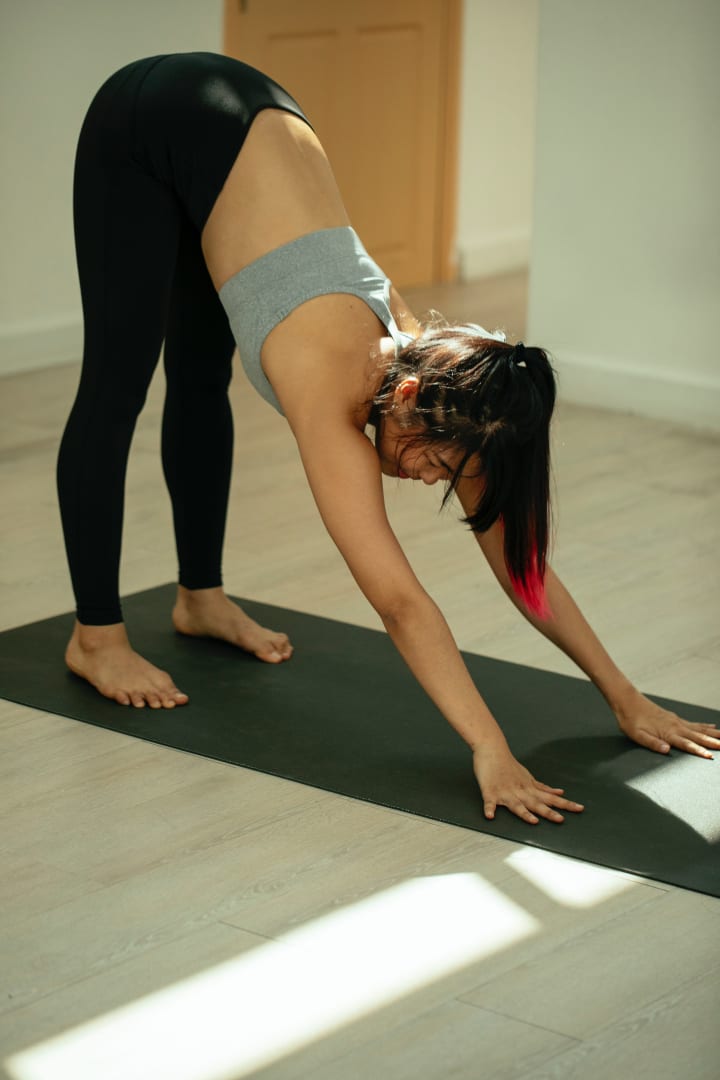
This pose, also known as Adho Mukha Svanasana, lengthens and strengthens your bones and muscles while providing a full body stretch. Additionally helpful for digestion, it also eases tiredness, soothes the mind, and enhances blood circulation.
Steps:
* Start on all fours in the tabletop position. Put your knees beneath your hips and your hands directly beneath your shoulders. Look at your knees; your feet should be right behind your knees, so you shouldn't be able to see them.
* Spread out your palms from your fingers to the outer margins. To prevent excessive elbow flexion, keep your forearms turned inward and your upper arms and shoulders rotated outward.
* Lift your knees off the ground as you exhale. Beginners can maintain a modest bend in the knees to stretch the spine and elevate their heels off the ground.
* Your heels should be pointing towards the floor as you tighten your hamstrings. If at all possible, preserve the length of the spine while straightening the legs. Keep becoming longer
2. Camel Pose
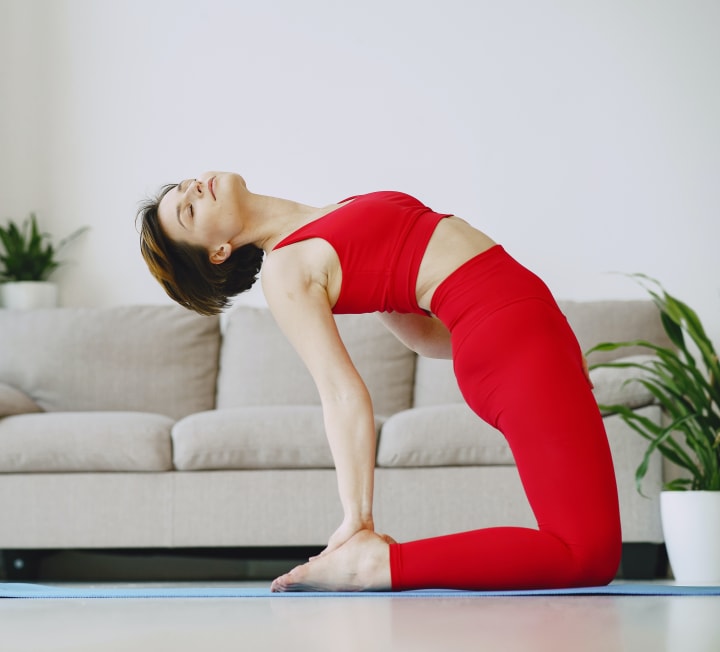
Ustrasana, also known as the camel position, increases spinal mobility by stretching the front of the body, including the chest, abdomen, and quadriceps. The heart chakra, which is the energy center for compassion and love, is also claimed to be opened by it.
Steps:
* Start by putting your knees up on the mat. As you kneel with the tops of your feet on the mat, make sure your knees are hip-width apart. Your tailbone should be tucked beneath you and towards the ground while you sit tall in the spine.
* Place your palms at the base of your spine, covering the sacrum, and use your hands to support your lower back. Take a deep breath in, lift your gaze, and start to bend backward. Look as high as your neck will allow while stretching up and opening through the sternum.
* As you exhale, move your glutes forward. As you start to reach for one heel and then the other, tighten up the front of your thighs. Continue to glance up and back. Continue shifting your weight by pulling up onto your heels.
3. Boat Pose

The boat position is known as Navasana in Sanskrit. It is a great posture for strengthening your core and toning your back and abdominal muscles. Additionally, it exercises the back, hip, thigh, and core muscles, improving their strength and flexibility.
Steps:
* Inhale and elevate the chest and feet off the yoga mat as you start by lying flat on the mat with your feet together and your arms at your sides. Stretch your arms down to your feet as you exhale.
* As your stomach's abdominal muscles contract, you'll feel tightness. The buttocks will bear the majority of the body's weight.
* Hold the position while holding your breath for at least 10 to 30 seconds. To relax and return the body to its initial position, slowly exhale.
4. Pigeon pose
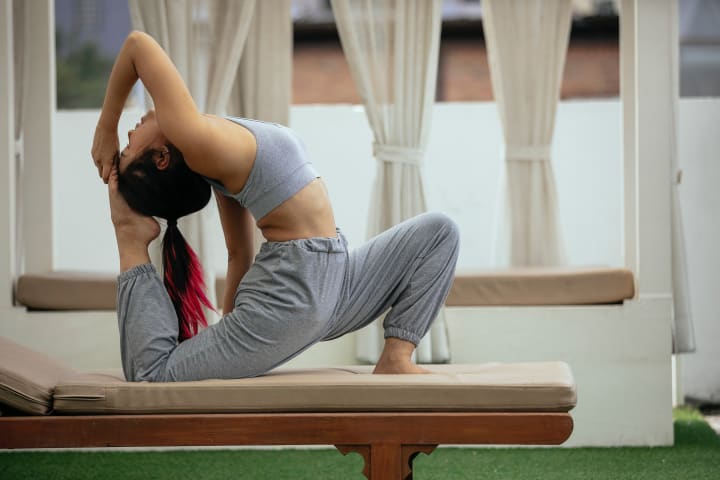
Pigeon posture, also known as Eka Pada Rajakapotasana, helps to expand the hips and relieves lower back stiffness. Additionally, it promotes joint flexibility and mobility.
Steps:
* Start in the Downward Dog position. Beginning on all fours, place your hands (palms down) on the mat in front of you. Straighten your legs, engage your hands and feet, and lift your hips upwards towards the ceiling.
* Raise the right leg off the floor and place the back of the right wrist with the right knee. Next, turn the right shin such that it is parallel to the mat's front.
* As your left leg touches the ground, keep it straight.
* Gently descend the right buttocks towards the ground and make sure that both hips are equally loaded. * Keep the right knee outside so that it is farther to the right than the hips. * Make sure the right foot is dorsiflexed.
* To straighten and lengthen the spine, place both hands under the shoulders and softly press into the palms of the hands.
* Stretch your arms straight in front while keeping your elbows slightly bent. Lower your chest over your right leg.
* Hold this position for 5–10 breaths, gently. On the opposite side, repeat.
5. Warrior pose
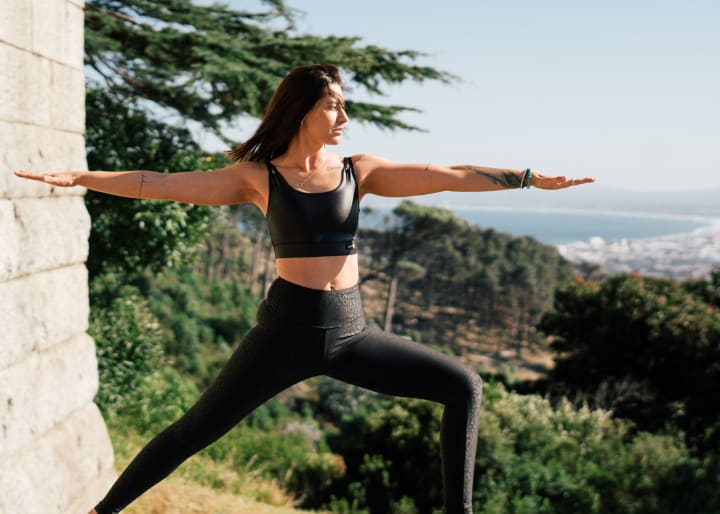
According to Vedic beliefs, the warrior position, also known as Virabhadrasana in Sanskrit, represents the legendary warrior Vrabhadra. Your shoulders, arms, back, and legs are its main focus.
Steps:
* To start, stand on the mat with your legs separated by three to four feet.
* Rotate the left foot in at 45 or 60 degrees and the right foot out at 90 degrees.
* Lift both sideways, palms facing up, arms to shoulder height.
* Slowly glance to your right while extending your arms and bending your right knee over your big toe.
* Breathe normally and make an effort to lower your pelvis. For a few seconds or counts, hold the pose.
* Breathe in and out as you descend further.
* Exhale and lower your hands to your sides.
* Return to the starting position. Likewise, repeat from the left side.
About the Creator
Nikilesh Srinivasan
Entrepreneur
Fitness Athlete
Love to teach everyone about fitness and wellness.
Enjoyed the story? Support the Creator.
Subscribe for free to receive all their stories in your feed. You could also pledge your support or give them a one-off tip, letting them know you appreciate their work.
Reader insights
Nice work
Very well written. Keep up the good work!
Top insight
Expert insights and opinions
Arguments were carefully researched and presented


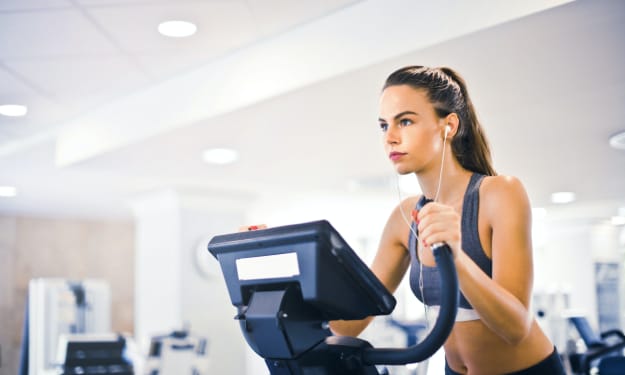



Comments
There are no comments for this story
Be the first to respond and start the conversation.